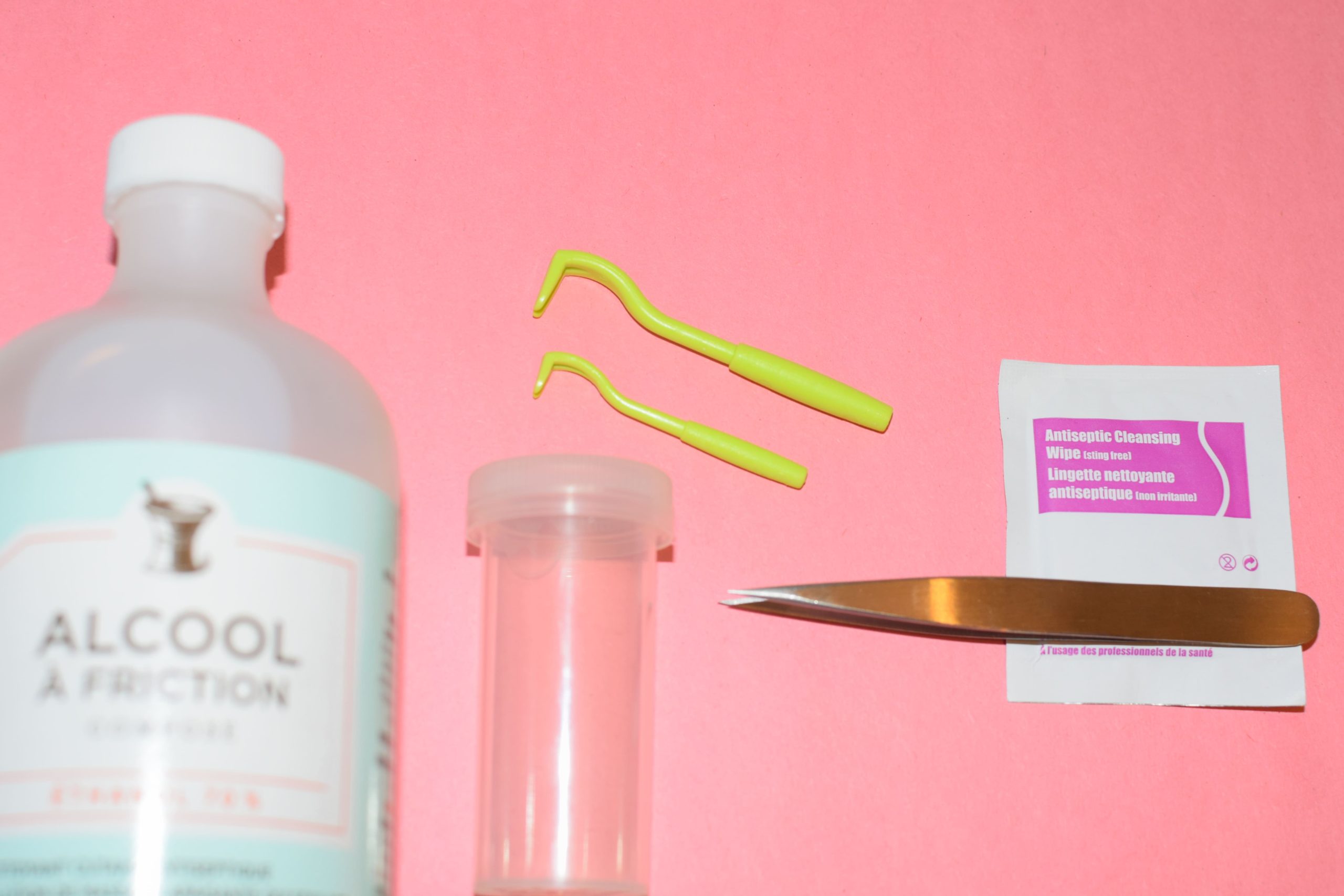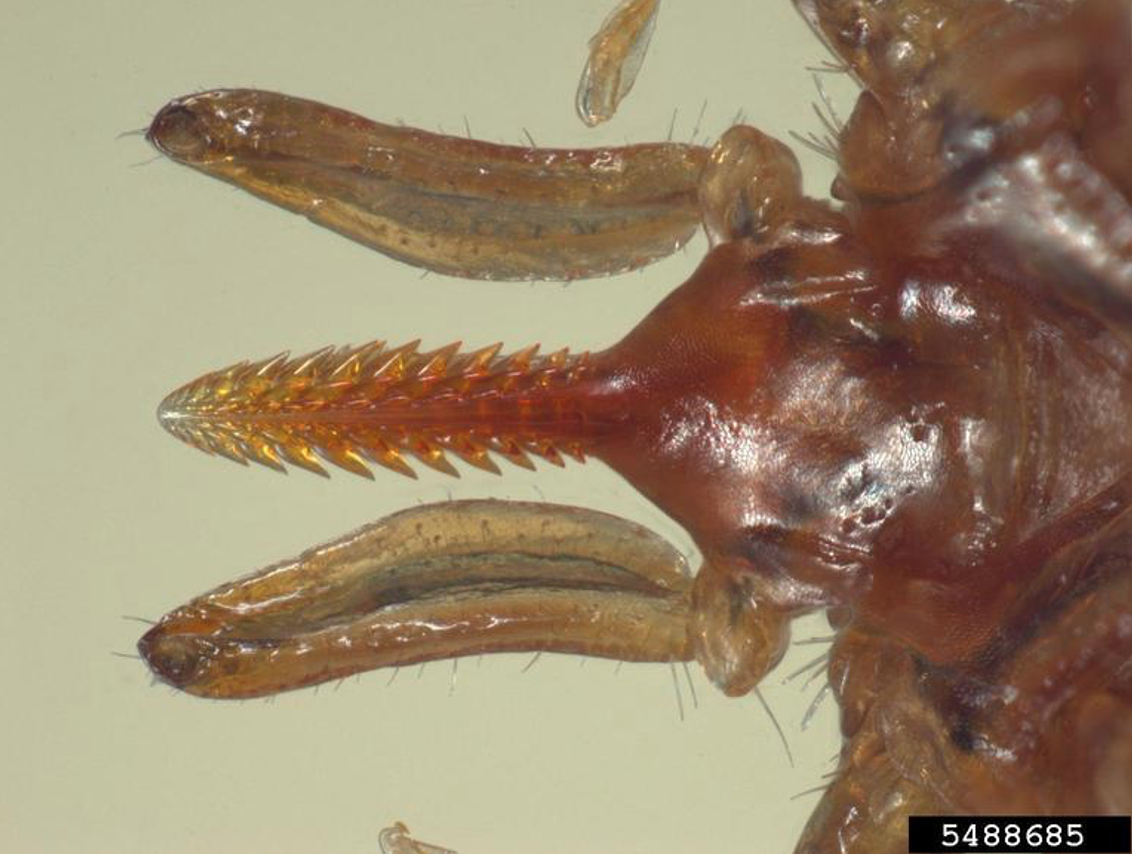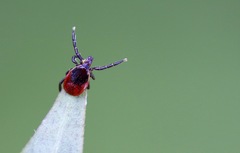
What should I do if I find a tick?
Photo by: Natasha Bowser
First of all, don’t panic!
The fact you were able to find and recognise a tick is great.
Things to know before getting started:
Not all ticks are infected with disease-causing agents. If the tick is infected, the risk of acquiring a tick-borne disease increases with the time it has been attached.
If the tick is freely moving, it can easily be brushed off into a sealable container or bag.
If the tick has attached to your skin, you will need to take steps to remove it as soon as possible. This can be done using fine-tipped tweezers or a specialized tick-removal device (see below).

Redness can occur at the site of the bite, just as with an insect bite.
[Photo by: Denys Williams, CC BY-SA 3.0, via Wikimedia Commons]

How to safely remove a tick:
- Find a pair of fine-tipped tweezers and a sealable container in which to store the tick.
- Using the tweezers, grasp the tick as close to the skin as possible. The aim is to grab the head of the tick, and to avoid putting pressure on the body.
- Slowly pull straight out, without twisting the tick, using firm but slow traction. Place the tick into a sealable container.
- If some parts of the tick break off and remain in the skin – don’t panic. Try to remove them with tweezers, but if this is not possible, leave the area to heal itself.
- Wash your hands and the bite area with soap and water or an alcohol-based sanitizer.
- Don’t forget to complete your tick check in case there are more ticks.

DO NOT try to burn or smother the tick using products such as nail polish, nail polish remover, essential oils, or petroleum jelly.
This 2-minute video demonstrates how to remove a tick, and what not to do.
What should I do after I have removed a tick?
- Keep the tick in a sealed container or bag for at least 30 days. You can kill the tick by freezing it for several days, or by putting it in rubbing alcohol. Avoid crushing the tick with exposed fingers.
- Record the date, time and place(s) where a tick was attached.
- Record how long you think the tick(s) may have been attached for.
- Record where you were when you were bitten by the tick(s) or where you suspect you were bitten.
- Monitor for symptoms of Lyme disease or other symptoms. For information on symptoms, click here.
- Get your tick identified on eTick (see below).
When should I seek advice from a healthcare provider?
Contact a healthcare professional in the following circumstances:
- If you develop any signs of Lyme disease or are not feeling well in the 30 days following a tick bite
- If you have any concerns after being bitten by a tick
Is there a preventative treatment for Lyme disease?
You may be eligible to receive preventative treatment following a tick bite depending on where you live, the duration of attachment and how recently the tick has been removed. Click here to access information specific to your province, or contact your local public health office to find out more.
Whenever possible, bring the tick with you in a sealed container when you see a healthcare professional.
If possible, have the tick identified!
This can be done through eTick, where you will be notified of the species, whether it is a species which could carry a disease or not and given advice on next steps to follow.
Identifying the tick through eTick provides useful information for you as well as providing public health authorities with more data to monitor tick populations across Canada.
For more information on what to do after a tick bite in your region, click here to access a list of province-specific literature and recommendations.
Printable Version


